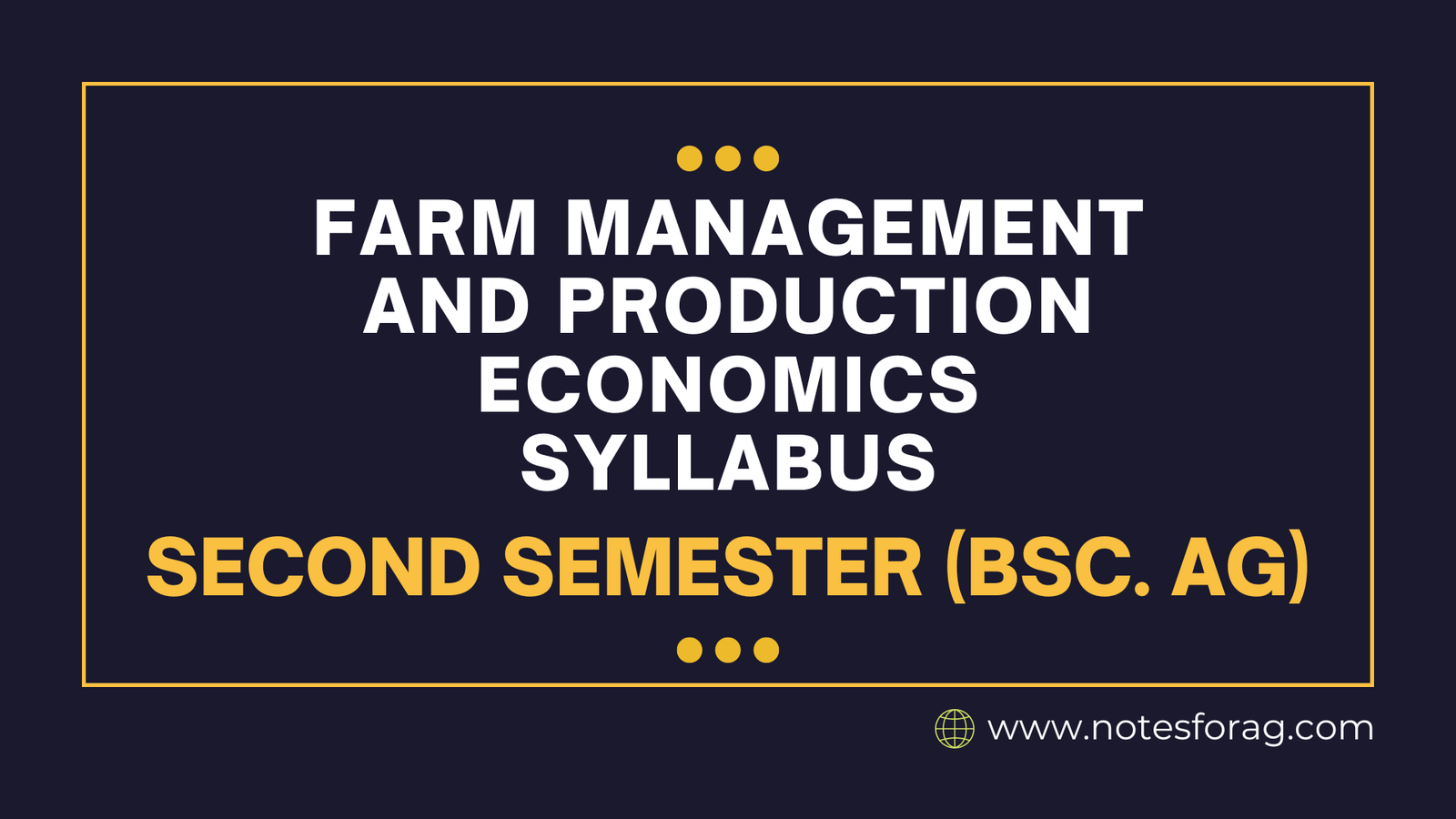| Course Code | AEC 102 |
| Course Title | Farm Management and Production Economics |
| Credit Hour | 3(2+1) |
| Full Marks | 75 |
| Theory | 50 |
| Practical | 25 |
Objectives
Upon the completion of this course, the students will be able to understand the
principles of farm management and production economics dealing with the analysis of farm resources having alternative uses.
Syllabus of Farm Management and Production Economics in BSc. AG
Definition, nature, scope, and importance of farm management in relation to other sciences. Farm resource management- land, labor, machinery, and civil works. Farm management problems in Nepal. Production relationship- factor-product, factor-factor, and product-product relationships. Principles of farm management decisions- the principle of variable proportion, cost principle, factors substitution, equi-marginal return, opportunity cost, principles of comparative advantages, and the principle of time comparison. Farm planning and budgeting. Farm record and account. Farm efficiency measures. Risk and uncertainty. Linear programming: concept and approach.
Course Outline
A. Lecture
B. Practical
| S.N | Topic / Chapter Name | No. of Lectures |
| 1 | Determination of optimum input use and maximization of profit using one input | 1 |
| 2 | Least cost combination of inputs | 1 |
| 3 | Revenue maximization through optimum enterprise combination | 1 |
| 4 | Farm record keeping | 1 |
| 5 | Preparation of farm inventory | 1 |
| 6 | Development of a new farm plan | 1 |
| 7 | Preparation of Balance Sheet of a farm | 1 |
| 8 | Preparation of Income Statement of farm | 1 |
| 9 | Development of Cash Flow budget of a farm | 1 |
| 10 | Farm physical efficiency measures | 1 |
| 11 | Farm financial efficiency measures | 1 |
| 12 | Computation of depreciation of farm assets | 1 |
| 13 | Valuation techniques of farm assets | 1 |
| 14 | Exercise on the time value of money | 1 |
| 15 | Exercise on linear programming | 1 |
| Total | 30 |
REFERENCES
- Panda, S. C. 2007. Farm Management and Agricultural Marketing. Kalyani Publishers, New Delhi
- Manson, J. 1996. Farm Management. Kangaroo Press, Pennsylvania State University. Kay, R.D. and Edwards, W. M. 1994. Farm Management. McGraw Hill, Inc., New Delhi.
- Kahlon, A. S. and Singh, K. 1992. Economics of Farm Management in India. Allied Publishers, New Delhi.
- Shankhyan, P. L. 1983. Introduction to Farm Management, Tata, McGraw-Hill, Co. Ltd., New Delhi.
- Johl, S. S. and Kapoor, T. R. 1973. Fundamentals of Farm Business Management. Kalyani Publishers, New Delhi.

